The Real Gateway Drug
Marijuana, known by different names, is also seen by many as a gateway drug – the next step toward using substances such as cocaine, methamphetamine, or prescription opioids. While it may often be billed this way, is it the only substance guiding users down a dark and dangerous road?
Over 1,000 Americans shared their past experiences with substance use and the order in which they started and potentially furthered their experimentation with other substances. Continue reading to learn about the first steps into substance use most people take.
The Start of Substance Use
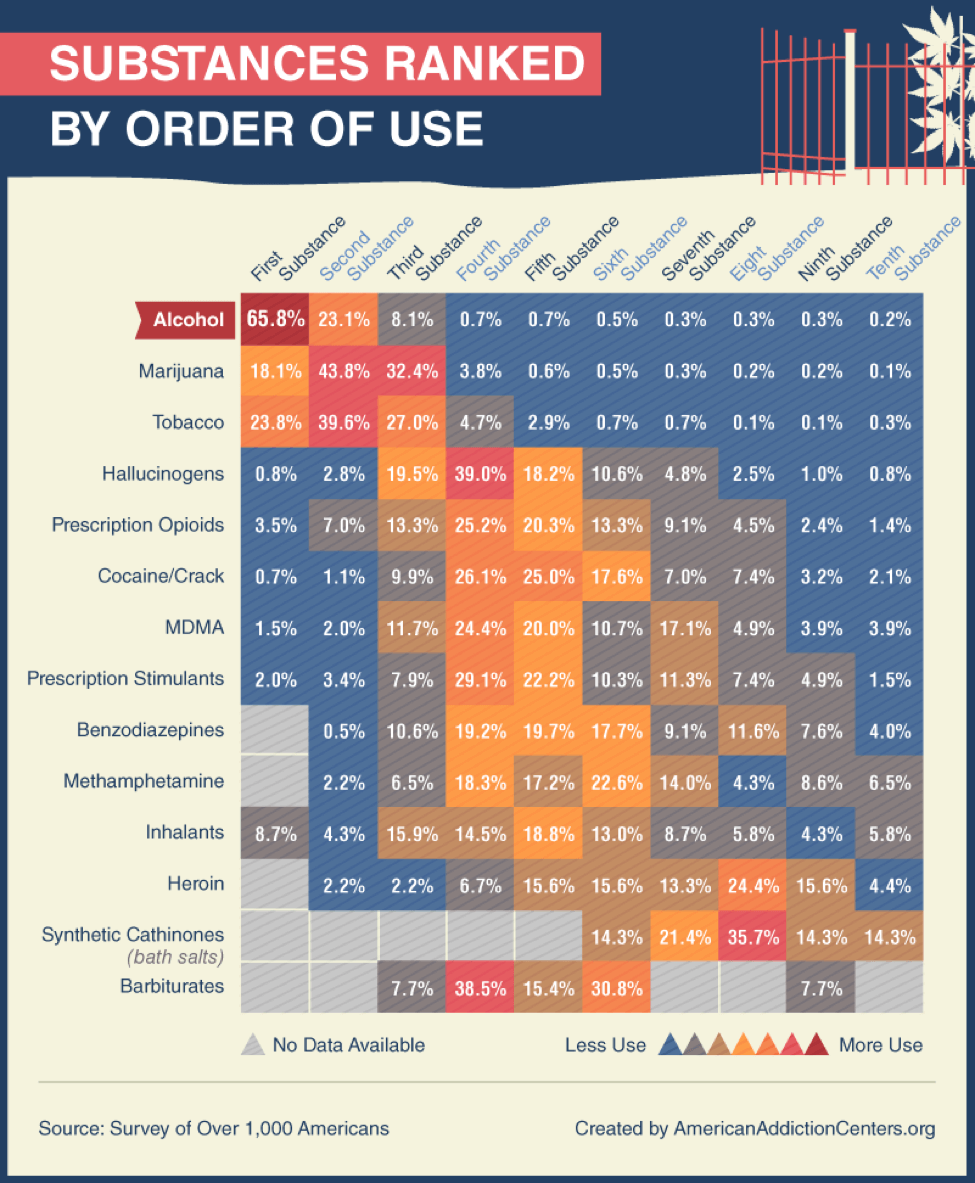
To explore trends in initial drug and alcohol use, we first visualized the order in which substances were used. Of alcohol users, nearly 66 percent indicated it was the first substance used. The Centers for Disease Control and Prevention (CDC) reported those aged 12 to 20 drink 11 percent of alcohol consumed in the U.S. What’s worse is the lack of understanding about the dangers of drinking and binge drinking, which is how many young people consume alcohol. Those aged 12 to 20 consume over 90 percent of their alcohol in the form of binge drinking.
Following alcohol, marijuana and tobacco were widely used as second and third substances of choice. Less than 6 percent of respondents experimented with marijuana after having already used three other substances. Hallucinogens were most often the fourth substance used (39 percent), and cocaine/crack was most often the fourth, fifth, or sixth substance used.
Substance Use Over the Years

Alcohol was the first substance used for over 65 to 68 percent of participants. Spending on alcohol advertising increased to over $540 million in the U.S. from 1971 to 2011, and those born in the 1990s were the largest group to have tried alcohol before any other substance.
Further, over 23 percent of respondents born in the 1970s tried tobacco first, while more than 10 percent used marijuana. And people born in the ’90s most often used marijuana first (almost 22 percent). Perhaps this is why a majority of Americans now approve of legalizing marijuana, despite the risk of anxiety, depression, hallucinations, and paranoia.
The Influence of Anti-Substance Use Programs
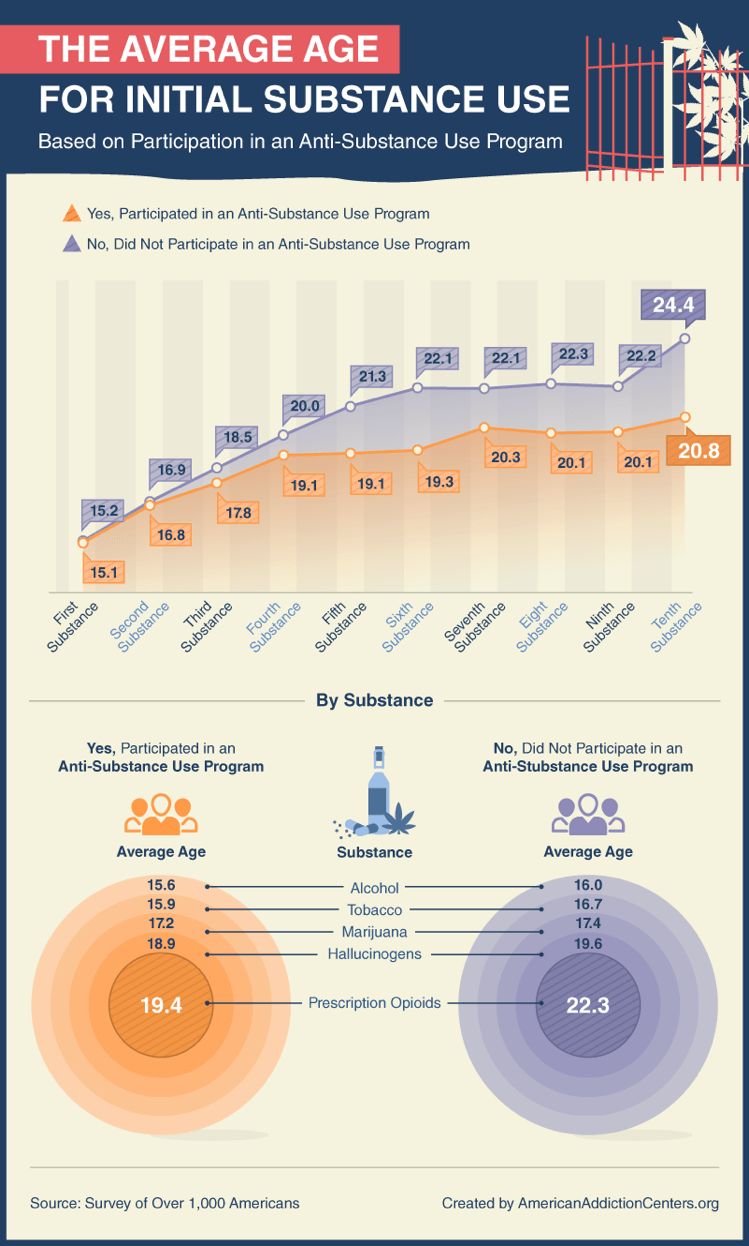
Educating people about the dangers of substance use may not have helped people as well as advertised. Whether it was the first or fifth substance used by a respondent, those who participated in anti-substance use programs were always younger than those who didn’t participate when they first used a substance. This delta only expanded as individuals tried more and more substances.
Specifically, people who participated in an anti-substance use program first tried alcohol at the average age of 15.6 versus 16 for those who did not participate. Respondents who took part in an anti-substance use program also tried tobacco (15.9 versus 16.7), marijuana (17.2 versus 17.4), hallucinogens (18.9 versus 19.6), and prescription opioids (19.4 versus 22.3) sooner than those who did not participate.
The Influence of Childhood Stability
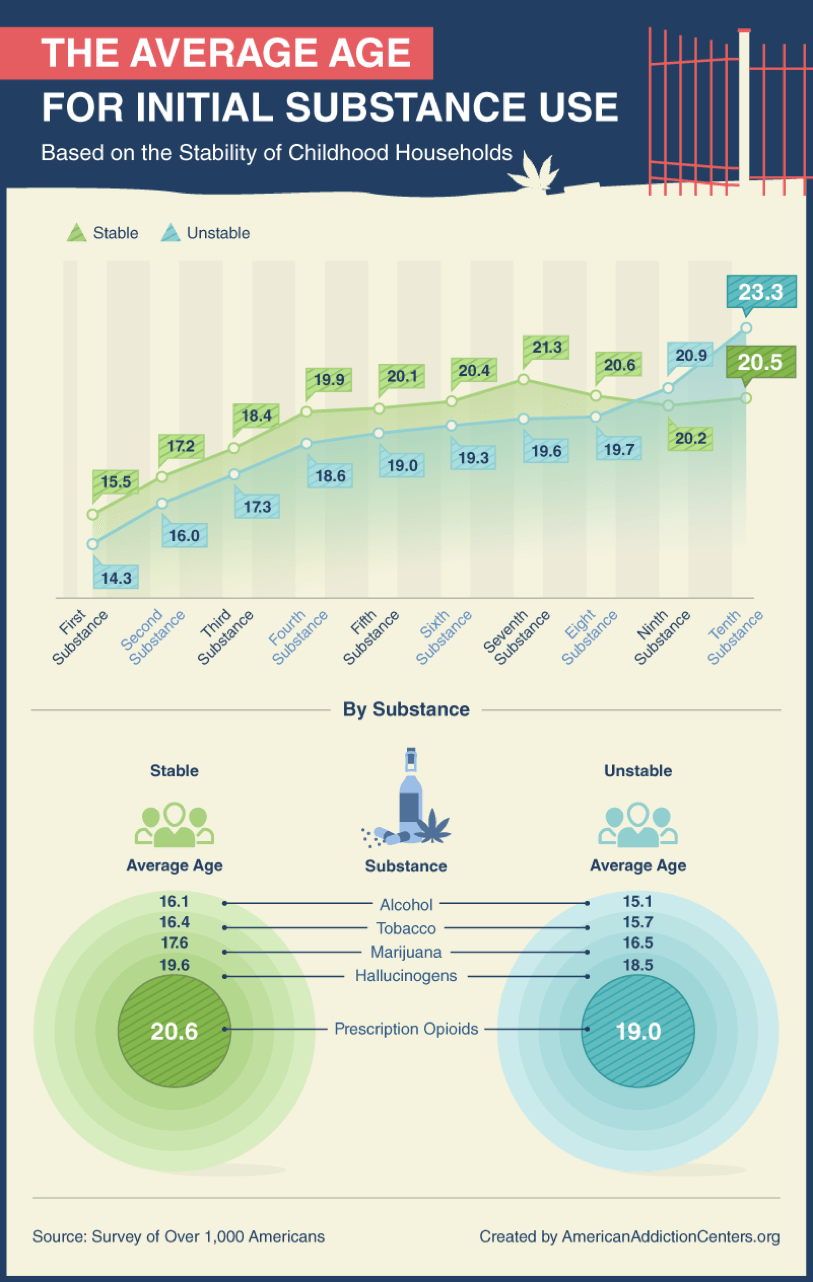
Participants who were raised in an unstable home environment tried their first substance at the average age of 14.3. This was more than a year earlier than people who had a stable childhood.
Additionally, respondents with an unstable childhood tried their second substance at the average age of 16 versus 17.2 for those with a stable household.
Family dynamics have changed in America over the past few decades, which has presented multiple scenarios where substance use can occur. For example, parents who use drugs or alcohol in front of a child can damage that child’s future – from impairing their learning capacity to developing a substance misuse disorder. According to our survey results, people who had an unstable childhood household first used alcohol at the average age of 15.1.
Substance Use in High School vs. College
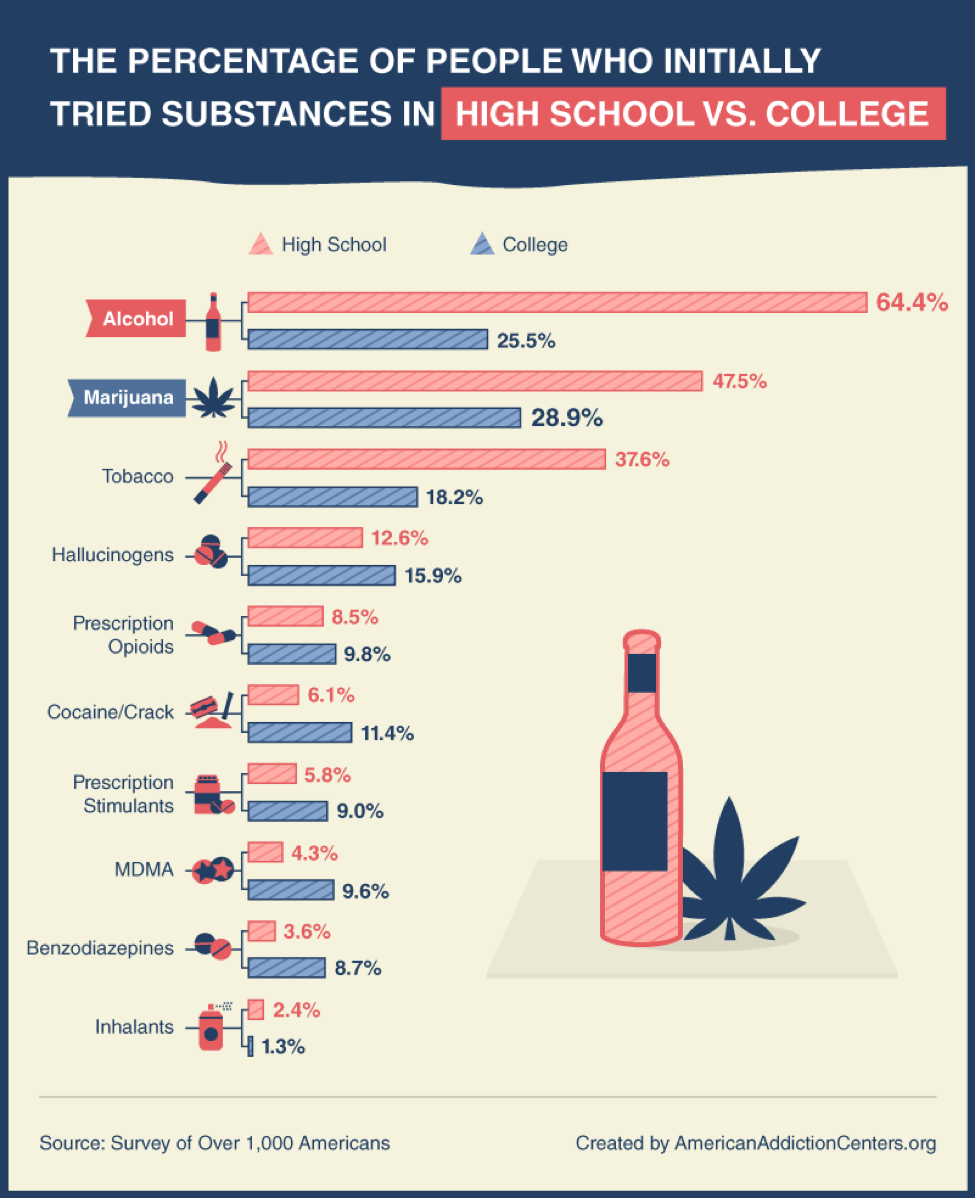
The majority of respondents first used alcohol, marijuana, and tobacco in high school. Over 64 percent of people who tried alcohol for the first time did so as a high school student. Only around 25 percent first used alcohol in college.
Regarding marijuana, almost 48 percent sampled it in high school, while nearly 29 percent first tried it in college. Additionally, less than 38 percent of participants used tobacco in high school versus over 18 percent in college.
While more than 11 percent of respondents first used cocaine/crack in college, just over 6 percent initially tried it in high school. This was a similar case for prescription stimulants, MDMA, and benzodiazepines.
Setting the Scene for Substance Use
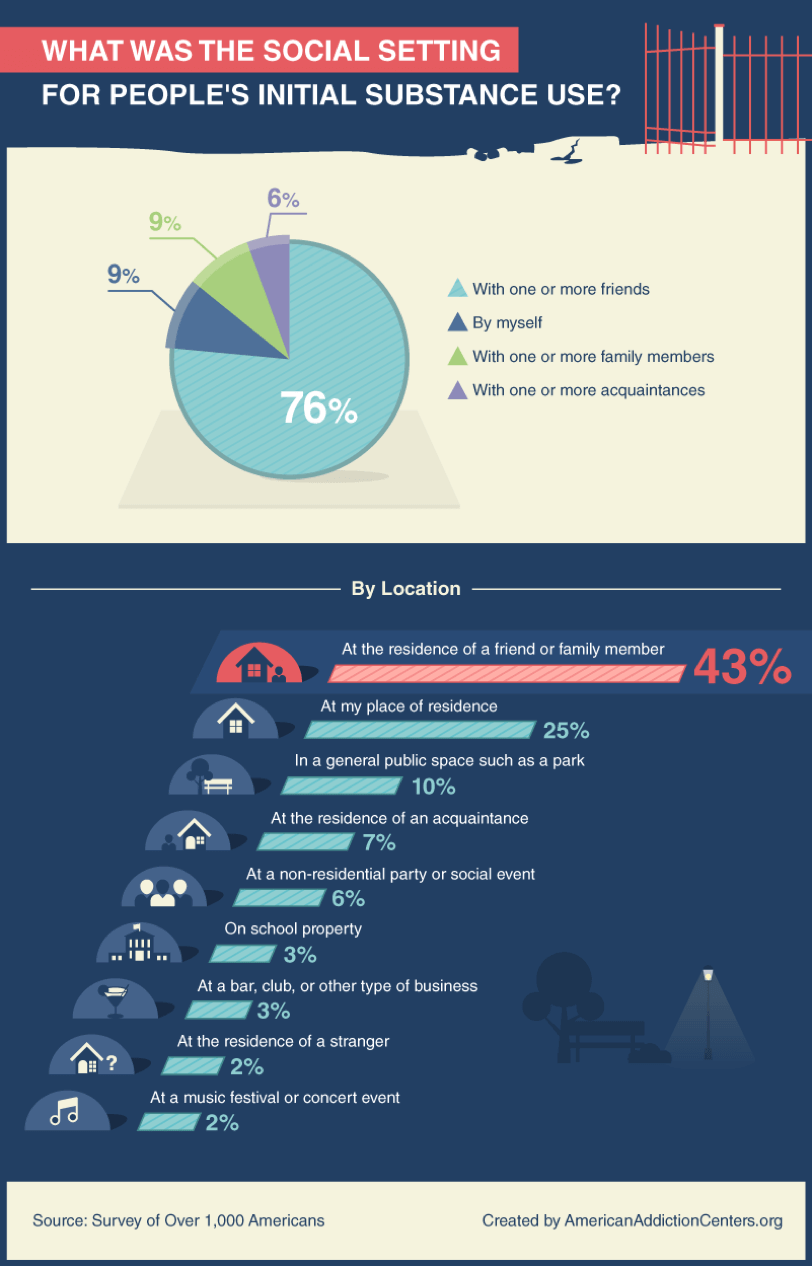
Rarely did participants first use a substance with acquaintances (6 percent), family members (9 percent), or alone (9 percent). Instead, 76 percent first tried substances with one or more of their friends.
But where did most people first participate in substance use? Forty-three percent of respondents first used substances at the residence of a friend or family member, while 25 percent did so at their own place of residence. Less than 3 percent did it at a music festival or other concert event, or at the home of a stranger.
Going Back to Substance Use
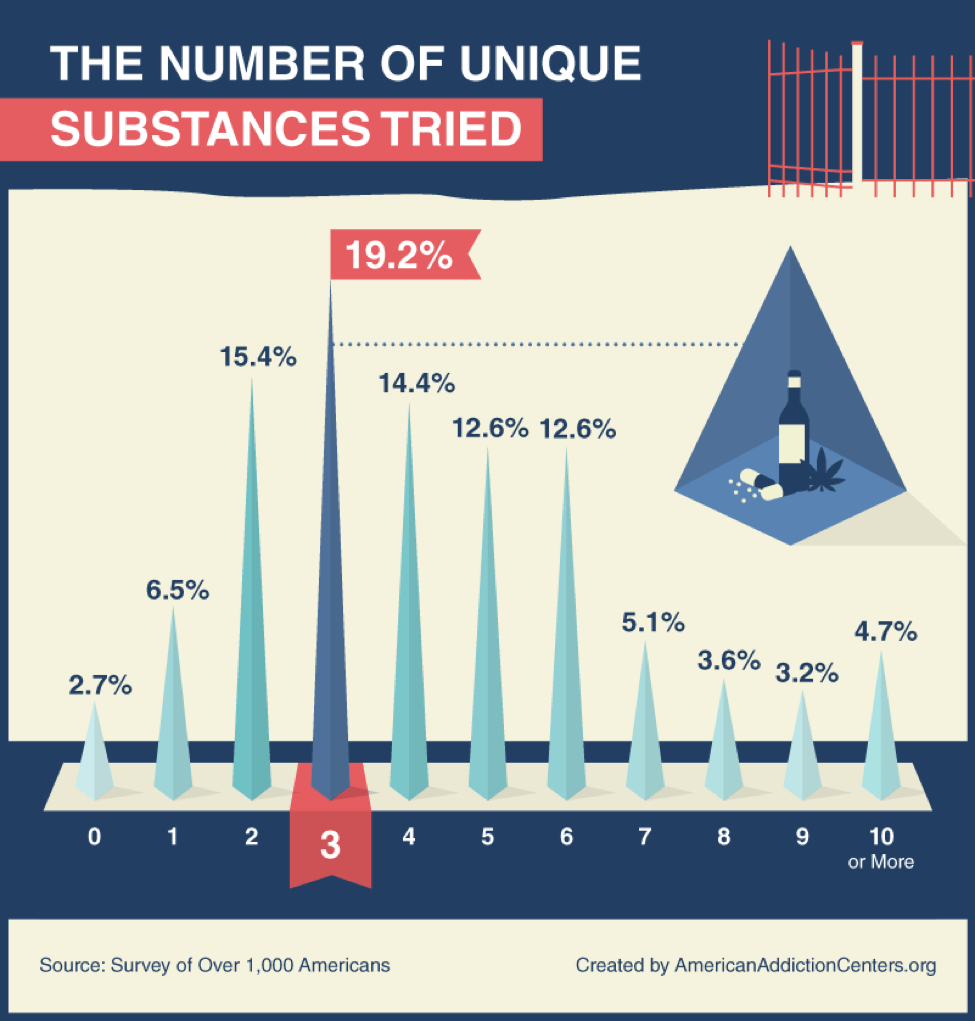
While nearly 3 percent of participants never took part in substance use, nearly 91 percent have used two or more substances. In fact, the most popular number of different substances used was three, likely to include alcohol, marijuana, and tobacco based on our earlier analysis of substances used in order.
Though use began to drop past this point, more than half of participants experimented with four or more substances. With some individuals using 10 or more substances (4.7 percent), the chance of developing a dangerous polysubstance addiction can increase dramatically.
The Open Doors of Substance Use
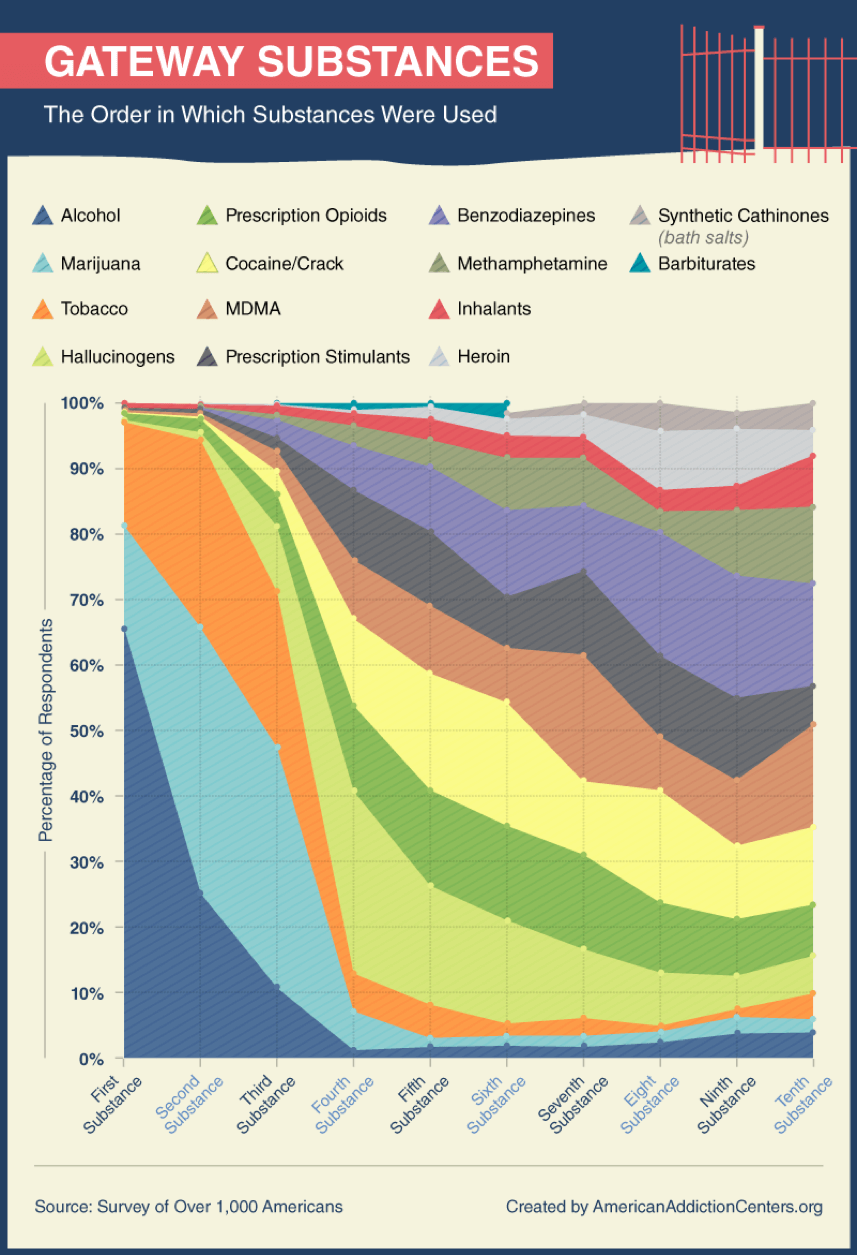
As shown in previous visualizations, alcohol, tobacco, and marijuana are most often the first three substances tried. In fact, over 97 percent of people said these were the first substances they ever used. Participants most often tried hallucinogens as their fourth substance (nearly 28 percent). Crack/cocaine and benzodiazepines were commonly the sixth and eighth substances tried, respectively.
Sources
- https://www.cdc.gov/alcohol/fact-sheets/underage-drinking.htm
- http://www.adweek.com/brand-marketing/alcohol-ads-increased-400-over-40-years-americans-arent-drinking-more-163668/
- https://time.com/4081755/american-marijuana-legal-poll/
- https://www.ncbi.nlm.nih.gov/books/NBK64258/
